Monaco Grand Prix circuit layout: how it's changed since 1929
Still remarkably similar to its original 1929 layout, the Monaco Grand Prix circuit has had a few alterations in its 94 year history. Here is every one that has shaped the modern F1 track
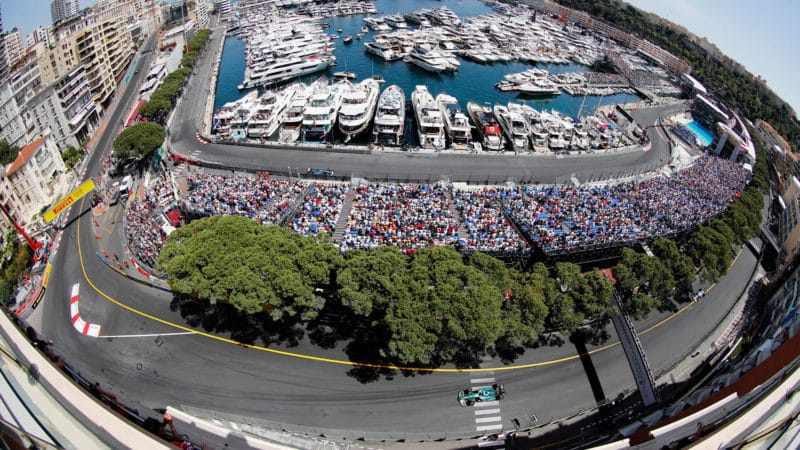
Low-speed Monaco circuit should flatter this year's Aston Martin
Aston Martin
The glamour. The challenge. The drama. Almost all have been present ever since the enigmatic “W Williams” took victory at the first Monaco Grand Prix in 1929.
It’s why Monte Carlo remains one of the jewels of the motor sport calendar, despite the increasing challenge of shoehorning a modern race onto its narrow streets.
The circuit was first designed by wealthy cigarette manufacturer and local resident Anthony Noghès, and is still remarkably similar to its original layout with the Grand Hotel Hairpin and Sainte Devote included in the earliest plans.
Described by Nelson Piquet as “like riding a bicycle around your living room”, the circuit remains a formidable challenge to modern drivers, demanding uninterrupted concentration and inch-perfect accuracy as they navigate the knife-edge of optimum performance while avoiding the unforgiving barriers.
Scroll down to see every change made to the circuit in the past 94 years.
Monaco Grand Prix circuit: every change since 1929
Monaco circuit layout, 1929-1954

The 1950 F1 field passes around the Gasworks Hairpin
GettyImages
The original circuit consisted of 12 corners, beginning on Boulevard Albert I before turning right through Saint Devote – named to honour the small Saint Devota chapel which is usually obscured by crash barriers and sponsorship signage on race weekends.
Cars then travelled uphill through Beau Rivage – which roughly translates to “beautiful seashore” in English – and Massenet, named after famous French opera composer Jules Massenet.
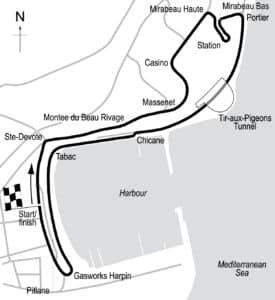
A sharp right-hand turn at Portier, which shares its name with one of Monaco’s neighbouring towns, quickly forced cars onto the sweeping straight through the Tir-aux-Pigeons Tunnel before breaking at the Chicane du Port.
The final third of the lap contained just two corners: Tabac and the Gasworks Hairpin – the former earning its name thanks to a small tobacco shop just outside the quick left-hander.
During its formative years, the circuit certainly produced its fair share of unusual incidents, with almost half the field being eliminated during the 1950 event due to a rogue wave that flooded the circuit at Tabac. In 1952, the circuit witnessed its first fatality, after Luigi Fagioli succumbed to his injuries three weeks after a crash in the Tir-aux-Pigeons Tunnel.
Monaco circuit layout, 1955-1972
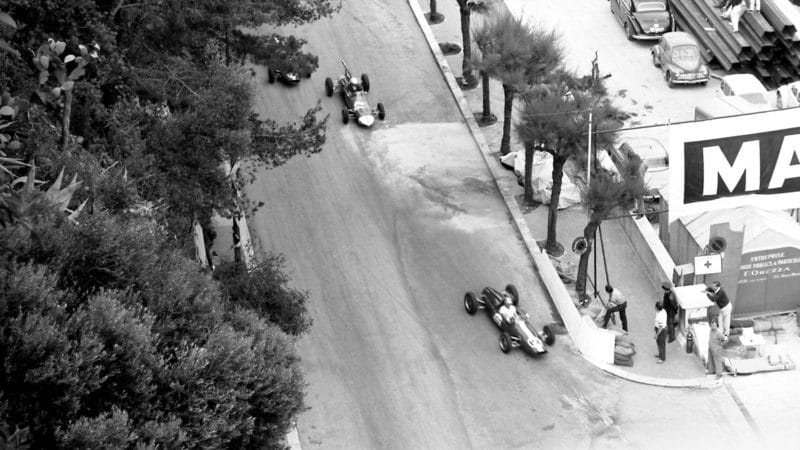
The field enters Chicane du Port at the 1962 Monaco GP
GettyImages
Beginning in 1955, changes were made at the Chicane du Port – repositioning the turn and minimally reducing the overall circuit distance.
The start/finish line was also briefly moved opposite the harbour, before being moved back to its original position in 1963.
Monaco circuit layout, 1973-1985
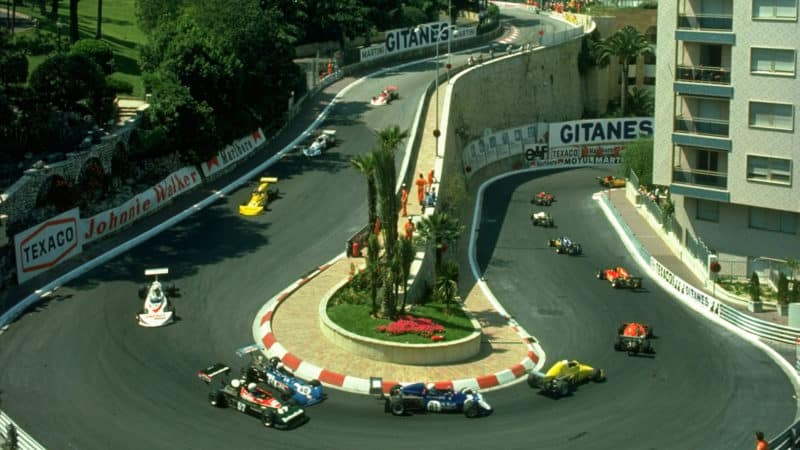
Cars thunder around the newly named Loews Hairpin during 1976 Monaco GP
GettyImages
Between 1973 – 1985, major alterations were made to the circuit to ensure its future on the F1 calendar. The Loews (now Grand) Hotel was built over the Tir-aux-Pigeons Tunnel which was subsequently renamed, along with the Station Hairpin, to honour the newest addition to Monaco’s skyline.
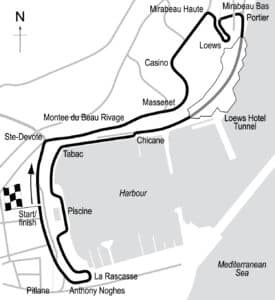
The Gasworks Hairpin was replaced by two corners: La Rascasse, which is made up of two tight right-hand turns, and Anthony Noghès – named after the circuit’s original designer.
Saint Devote and La Rascasse were later reworked, pushing the circuit’s total length to 2.058-miles.
Monaco circuit layout, 1986-1996
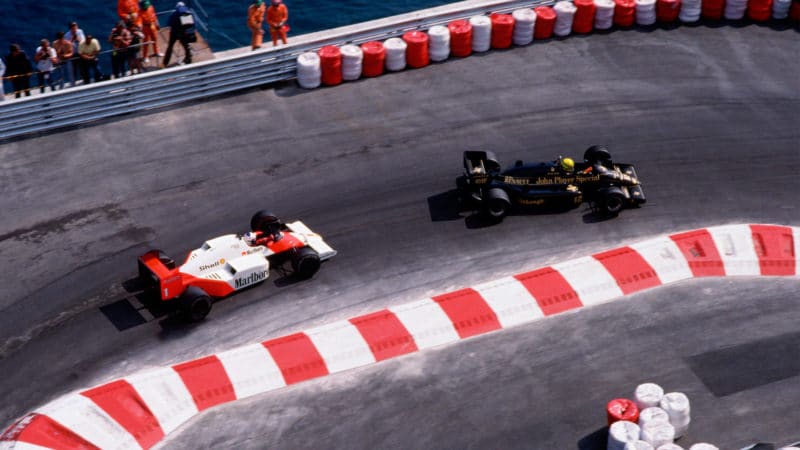
Prost (McLaren) chases Senna (Lotus) through Nouvelle Chicane
GettyImages

For the 1986 event, changes finally came, with the addition of the Nouvelle Chicane. This involved building a new concrete section of track that extended into the harbour and turned the once fast-moving chicane into a slow complex of corners. It remains part the circuit to this day.
Monaco circuit layout, 1997-present
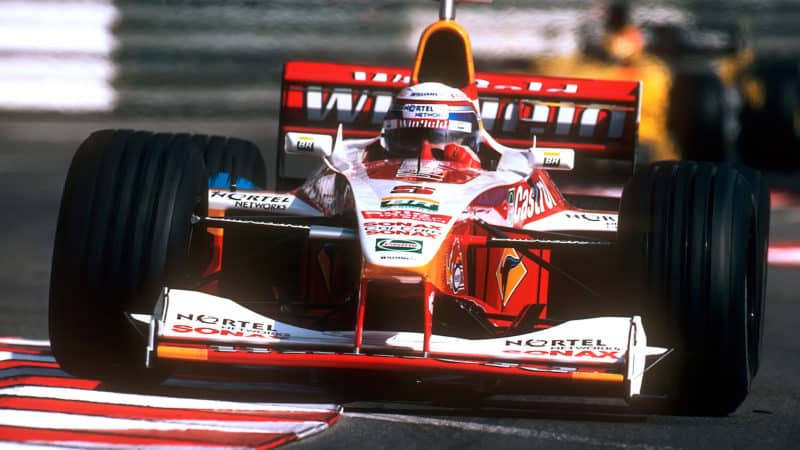
Alex Zanardi through the Swimming Pool chicane in the 1999 Monaco Grand Prix
GettyImages
With the modern layout now formed, designers have spent the last decade tweaking the Monaco circuit, while making it safer for the drivers and able to cater for the thousands of fans in attendance.
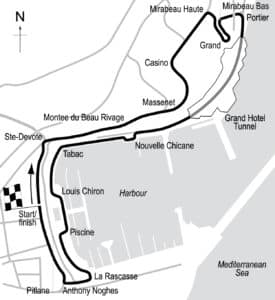
A new pit and pitlane was also built, with the pit exit now forcing cars to re-join the track on the exit of Saint Devote instead of on the home straight – improving safety.
Finally in 2015, Tabac was moved closer to the harbour side and the swimming pool section was reprofiled.
 Monte Carlo - Formula E Circuit
Monte Carlo - Formula E Circuit
Select a year
Type
Temporary street circuit
Length
2.069 (Miles)
Change
Chicane reprofiled
Fastest Race Lap
Jake Dennis (Porsche 99X Electric Gen3), 1m31.119, 81.744 mph, Formula E, 2023
Fastest Qualifying Lap
Sacha Fenestraz (Nissan e-4ORCE 04), 1m29.131, 83.567 mph, Formula E, 2023
